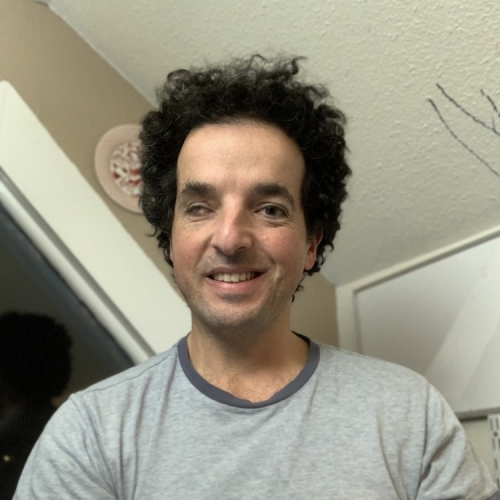Research
The brain is a tremendously complex system and in order to understand it we are going to need large amounts of data from many different kinds of measurements. Me and my colleagues use data science methods to integrate the information provided by these measurements into a coherent picture. In particular, we develop statistical analysis techniques to decipher the role of networks of brain areas in complex behaviors and in brain disorders, and I implement these techniques in robust, efficient, and openly-available computer software.
Education
University of California, Berkeley (2010)
- October 1, 2024 Rokem Publishes 10 Simple Rules for Scientific Code Review
- July 12, 2024 Ariel Rokem was awarded the 2024 Education in Neuroimaging Award by the Organization for Human Brain Mapping
- November 15, 2023 Ariel Rokem awarded Neuro-Irv and Helga Cooper Foundation Open Science Prize
- November 8, 2023 Ariel Rokem's forthcoming book, Data Science for Neuroimaging: An Introduction, to be published by Princeton University Press
- October 4, 2023 Ariel Rokem featured in UW News Q&A about recent research on baby brain development
- August 24, 2023 Ariel Rokem and John Kruper published a research article in Proceedings of the National Academy of Sciences (PNAS) on the rate of infant brain development in/ex utero
- July 10, 2023 John Kruper awarded an NSF Graduate Research Fellowship. Kruper is mentored by Ariel Rokem.
- April 18, 2022 Grad student McKenzie Hagen received National Science Foundation Graduate Research Fellowship. Hagen is mentored by Ariel Rokem.
- April 18, 2022 McKenzie Hagen received Department of Energy Computational Sciences Graduate Fellowship
- March 10, 2022 Ariel Rokem received a NIH Diversity Supplement to support a post-bacc researcher pursuing a career in biomedical research
- March 7, 2022 Ariel Rokem awarded five-year competing renewal grant from NIH supporting an annual summer institute on neuroimaging and data science at UW
- March 2, 2022 Ariel Rokem receives two NIH subawards for collaborative projects with Stanford University and the University of Texas.
- December 16, 2020 The College Council and Dean have recommended to the Provost that Ariel Rokem be promoted to Research Associate Professor.
- Kruper, J., Richie-Halford, A., Benson, N.C. et al. Convolutional neural network-based classification of glaucoma using optic radiation tissue properties. Commun Med 4, 72 (2024). https://doi.org/10.1038/s43856-024-00496-w
- Grotheer, M., Bloom, D., Kruper, J., Richie-Halford, A., Zika, S., Aguilera González, V. A., ... & Rokem, A. (2023). Human white matter myelinates faster in utero than ex utero. Proceedings of the National Academy of Sciences, 120(33), e2303491120.
- Richie-Halford, A., Cieslak, M., Ai, L. et al. An analysis-ready and quality controlled resource for pediatric brain white-matter research. Sci Data 9, 616 (2022). https://doi.org/10.1038/s41597-022-01695-7
- Kruper J, Yeatman JD, Richie-Halford A, et al. Evaluating the reliability of human brain white matter tractometry. Aperture Neuro 1: 1–25
- Mehta, P., Petersen, C. A., Wen, J. C., Banitt, M. R., Chen, P. P., Bojikian, K. D., Egan, C., Lee, S. I., Balazinska, M., Lee, A. Y., Rokem, A., & UK Biobank Eye and Vision Consortium (2021). Automated Detection of Glaucoma With Interpretable Machine Learning Using Clinical Data and Multimodal Retinal Images. American journal of ophthalmology, 231, 154–169. https://doi.org/10.1016/j.ajo.2021.04.021
- Richie-Halford A, Yeatman JD, Simon N, Rokem A. Multidimensional analysis and detection of informative features in human brain white matter. PLoS Comput Biol. 2021;17(6):e1009136.
